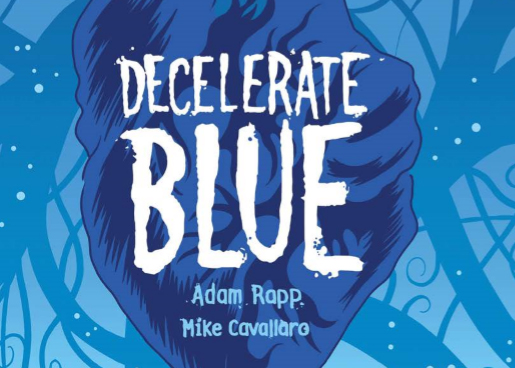
Timing aside, Rapp and Cavallaro have produced a fine piece of fiction which can stand on its own. The story revolves around a fifteen-year old girl, Angela, struggling with the fast-paced, consumer-driven world that she has grown up in. In this futuristic world, people busy themselves with all manners of distraction: Mall trips, advertisements around every corner, constant consumerism, and even increasing their own heartrates while the government is able to move on its own with little disruption. The only real concern for the people is protecting your “Guarentee,” seemingly a status symbol that marks you as belonging in this “go-go” world. If the tradeoff is being able to live in relative comfort, most people are glad to accept the “Go Guarantee, Go” doctrine.
The opening scene shows Angela sitting down to family dinner as her parents discuss their flavorless and non-consequential day, throwing around buzz words like “hyper” and “accelerate.” As Angela expresses a dissatisfaction with the “Megamail” and the “really hyper movies” that run around fourteen-minutes long, her parents are concerned with her dissention.
As the female protagonist finds herself eventually in an underground colony of individuals who have decided to go “off-grid,” matters take on a new shade of dire for the future. In comparison to the “fastness” of the upper-world, the underground dissenters hold dear the ideals of slowness, of meditation, of slow breathing, and of living simply; everything that the “Guarantee Committee” speaks out against.
At first, the art style and dialogue of the graphic novel threw me off. The simple black-and-white drawings with little detailing looked to me as lazy. Though as the story unfolded, I realized that the art was rather intentional. The fast-paced future in Rapp’s story prided itself with being succinct and efficient. Citizens were instructed to keep their sentences short and to the point, encouraging the use of contractions such as “can’t” instead of the slightly longer “cannot”, and avoiding as much as possible the use of adverbs. The art reflects this “to the point” attitude, being as efficient as it can to tell the story. There are panels where we are shown Cavallaro’s real artistic prowess, displaying the full range of emotions and thoughts that the main character is slowly awakening to. The writing was the same way as I had difficulty with how each sentence of dialogue ended with the word “Go,” of which I soon realized was intentional; another sign of how the Guarantee Committee was controlling the way citizens spoke, urging people to “use their Goes.” Luckily, we the reader get a reprieve from our “goes.”
What cuts truly deep about this story is that this where our society seems to be heading to now. We may not have chips imbedded in our arms, but we have cellphones that we check on average eighty-times a day. What’s to say we won’t be use to the idea of getting a tiny chip installed if it’s advertised as “timesavers” and “effortless.” There is always some product that some company is insisting we can’t live without and in turn always some technological device that we ourselves feel we could do better for if we had. This graphic novel truly is an important read, especially to that of our current generation of young adults who hardly know anything less that “instantaneous.” This is a great reminder that there are benefits to just sitting down, smelling the flowers, and perhaps taking the time in a world where there seems to be no time whatsoever to perhaps read a book.
Check out Decelerate Blue at your local bookstore or online. While you’re at it, check out the rest of First Second’s library of great reads at their website, www.firstsecondbooks.com


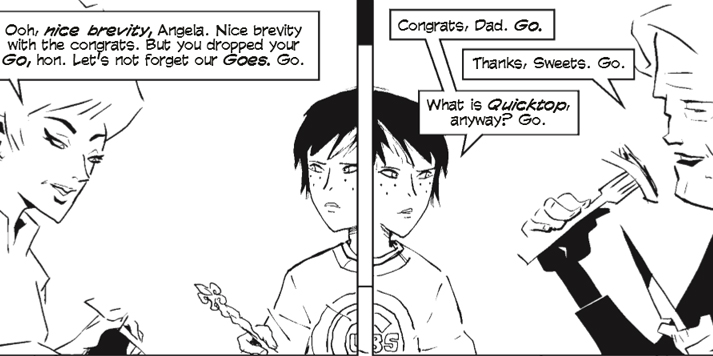
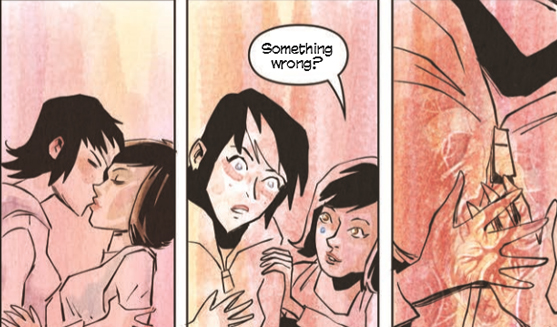

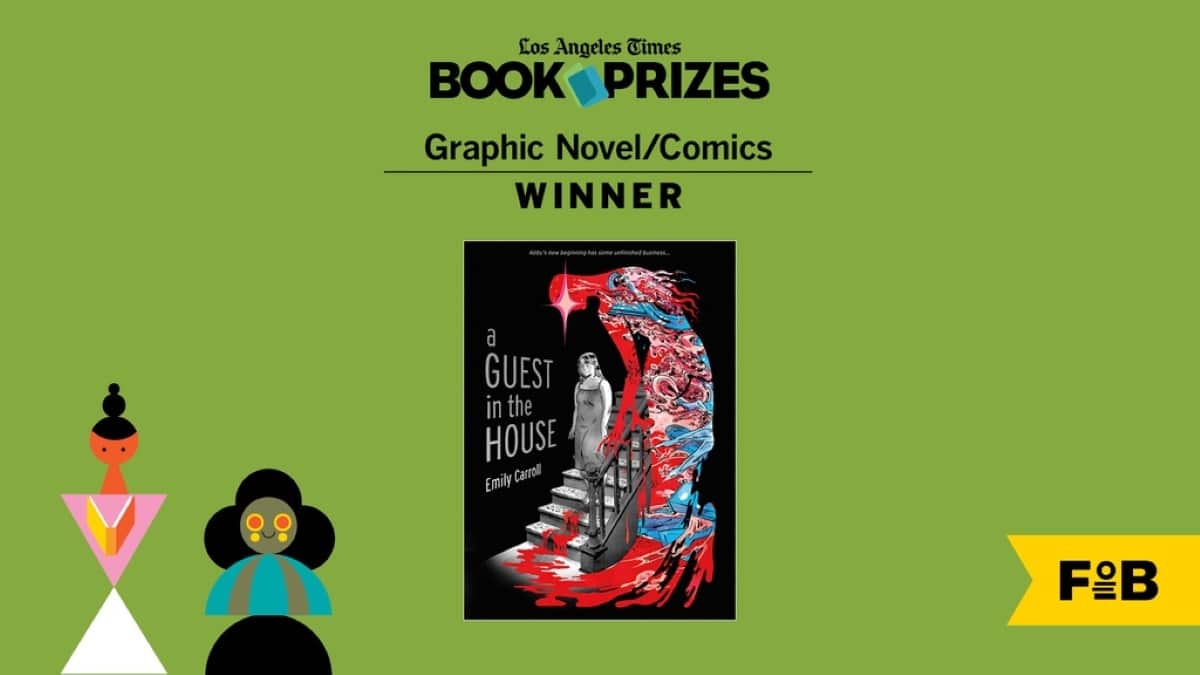
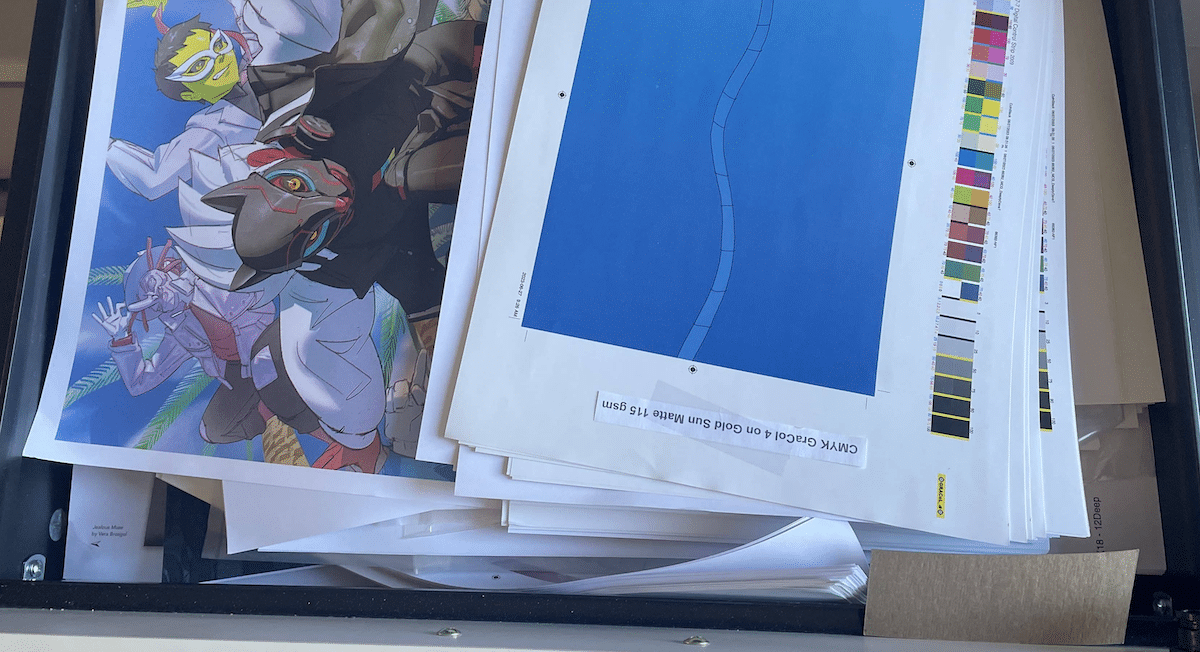
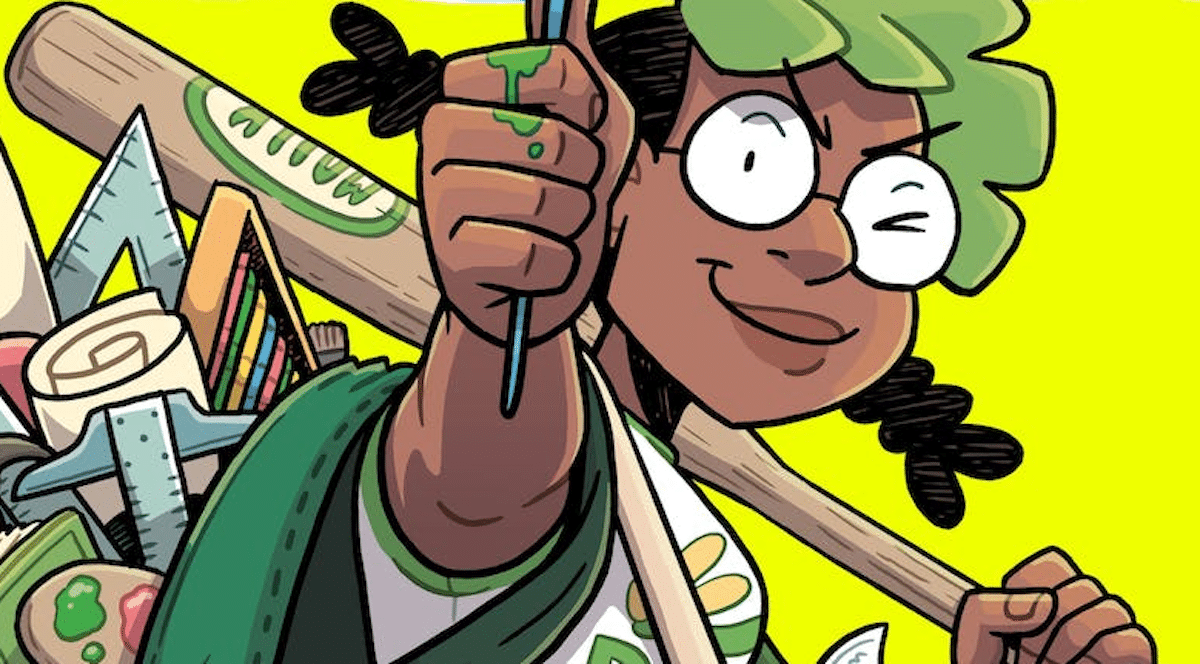


Might be helpful to mention it’s marketed for teens 12-17 (a so-called “YA” book). Doesn’t such omission have ironic similarity to the story’s consumerism?
– “There is always some product that some company is insisting we can’t live without […] This graphic novel truly is an important read”
So it’s a teen book nobody can live without? I found Johanna’s review more honest at http://comicsworthreading.com/2016/12/18/decelerate-blue/
Simon calling a review “dishonest” because it did not include demographic info’ is really harsh. It’s okay to add information but please do not insult the Beat staff,
Heidi, my saying I found another review “more honest” only imply I found this one less forthcoming. Isn’t a review supposed to disclose when content is intended for children or teens? And isn’t your quoting the word “dishonest”, that I never used, actually harsh?
(Maybe both contribute to why “the public doesn’t believe you people anymore”?)
Simon, thank you for reading my article. I’m sorry that I wasn’t “forthcoming” that it was written with an adolescent audience in mind. However, I firmly believe stories written for young adults still have great ideas and lessons to offer to adults as well. Take for example the books “The Outsiders,” “A Wrinkle in Time,” The “Harry Potter” series, and graphic novels “American Born Chinese,” “Bone,” and “Maus.” All of them were marked for young adults but are also enjoyed by adults alike. I guess I just don’t remember to include the tag “written for teens” because I think it could be enjoyed by everyone, but perhaps that’s my personal opinion. Sorry you didn’t agree with the review. Did you get a chance to read the graphic novel and see how it was for yourself?
Comments are closed.